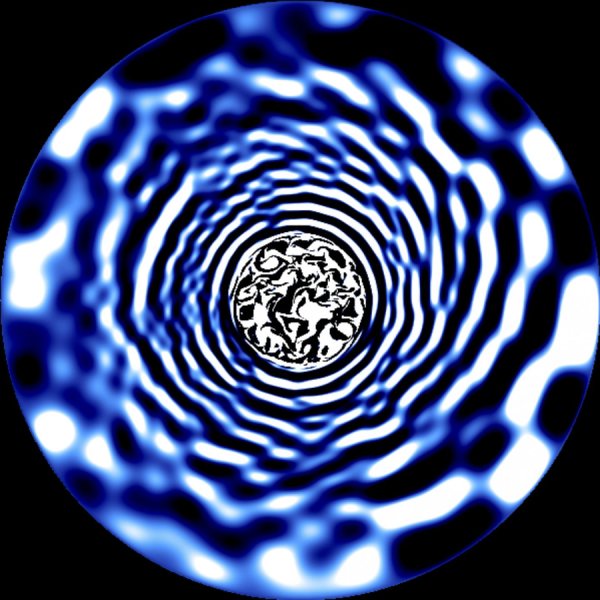
An article published in the journal “Nature Astronomy” reports the discovery that almost all blue supergiant stars show a shimmer in brightness on their surface. A team of researchers coordinated by the Katholieke Universiteit (KU) of Leuven, Belgium, used both observations made with NASA’s Kepler and TESS space telescopes and computer simulations based also on asteroseismology to study them thanks to the fact that that shimmer is caused by the presence of gravity waves on the surface of those very massive stars.
The blue supergiants are an advanced evolutionary phase of very massive stars, over 10 times the Sun’s mass, which begins when they exhausted the hydrogen of their core, starting the fusion of heavier elements in the core and of hydrogen of outer layers. This increases their surface temperature and brightness but it’s an unstable phase that, depending on the star’s mass and composition, can pass through other types of evolutionary phase and even go back and forth between two phases a few times. The end of that type of star is a supernova although in theory a sufficient loss of mass could leave only the core and little else, which would turn into a white dwarf.
The difficulties in understanding exactly the fate of a blue supergiant are due in particular to their rarity. Very massive stars consume their hydrogen at a very high speed so their life is no longer than a few tens of millions of years. Studying them isn’t only a scientific curiosity but the interest is also due to the fact that the most massive stars are also the ones that produce most of the heavy elements, which get scattered in space during their agony and by the supernovae and then end up in star systems in formation and in new planets as the Earth was about 4.6 billion years ago.
The Kepler space telescope was famous as a planet hunter and its successor TESS has the same main task, however they identify exoplanets thanks to the traces they leave passing in front of their stars with the consequence that those two missions collected a lot of data about them. The precise surveys of their brightness and of its variation over time is used to discover exoplanets but in the case of blue supergiants there are the effects of gravity waves, which have nothing to do with gravitational waves, coming from within them.
Past simulations already revealed the possibility that gravity waves could reach the surface of a star but that had long remained a theoretical concept. The image (Courtesy Tamara Rogers (Newcastle University). All rights reserved) shows a snapshot of a hydrodynamic simulation of the interior of a star with a mass three time the Sun’s showing the waves generated by the turbulent core. The different colors show the fluctuations caused by gravity waves.
Dr. Tamara Rogers of the British University of Newcastle, who led the research team, stated that they didn’t think they could observe those gravity waves. Dr Dominic Bowman of KU added that their discovery in many of the blue supergiants observed was a “Eureka moment”.
The situation has really changed thanks to the data collected by the Kepler and TESS space telescopes and now the detections of those gravity waves, which are seen with a shimmer in brightness on the stars’ surface, allow to study them using the technique of asterosismology, similar to the one used to study the Earth’s interior using the waves emitted during earthquakes.
By studying the frequencies of gravity waves on the surface of dozens of blue supergiants observed by the Kepler and TESS space telescopes, the authors of this research were able to determine some features of their interior, down to their core, such as their rotation and physical and chemical processes such as metal production.
Dr. Dominic Bowman stated that we’re entering a golden age of hot and massive stars’ asterosismology thanks to modern space telescopes and that the discovery of gravity waves in blue supergiants will allow to study supernova progenitors from a new perspective.
In essence, this research opens up a new front for the study of the most massive stars and in particular of the last phase of their evolution. This will improve our knowledge of the processes that lead to certain types of supernovae and their influence on the surrounding space areas with the production of heavy elements that can end up in new star systems.

